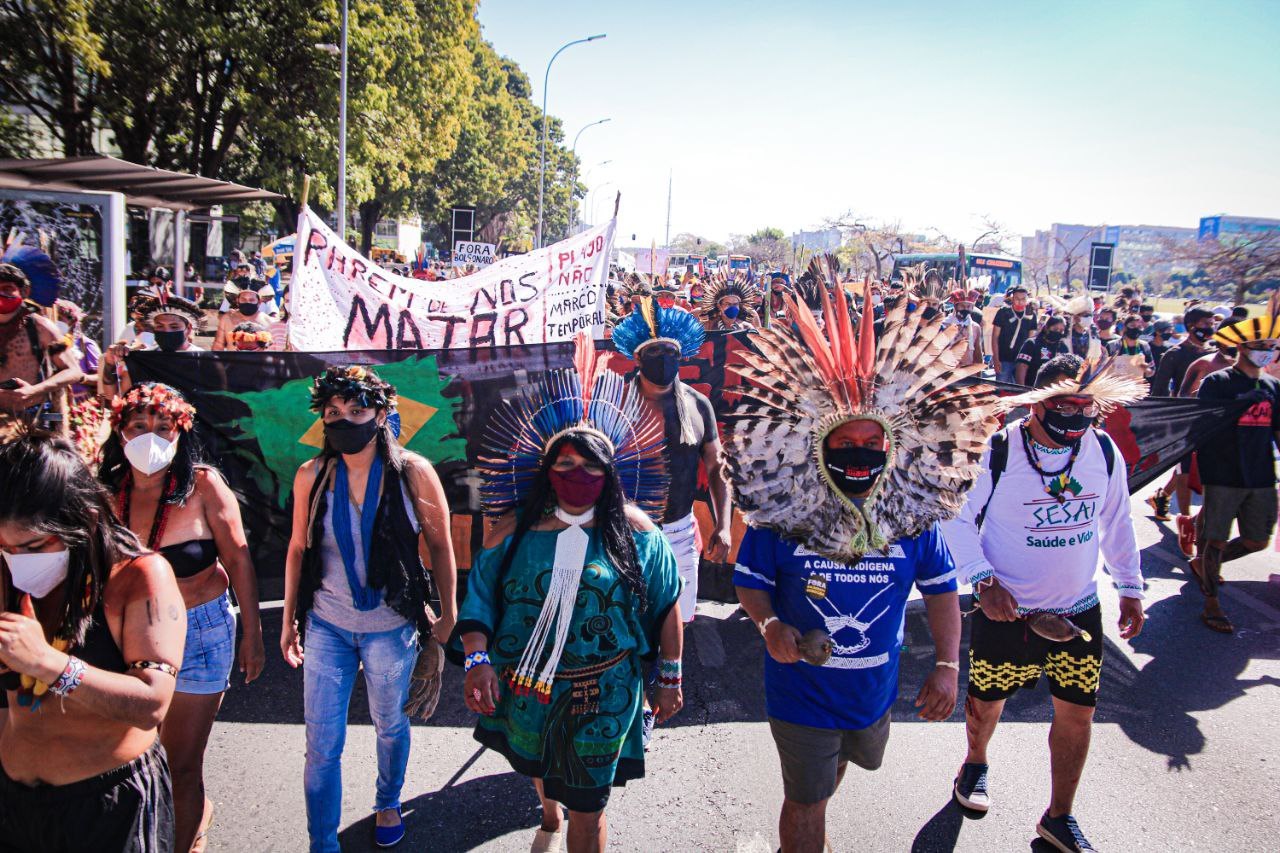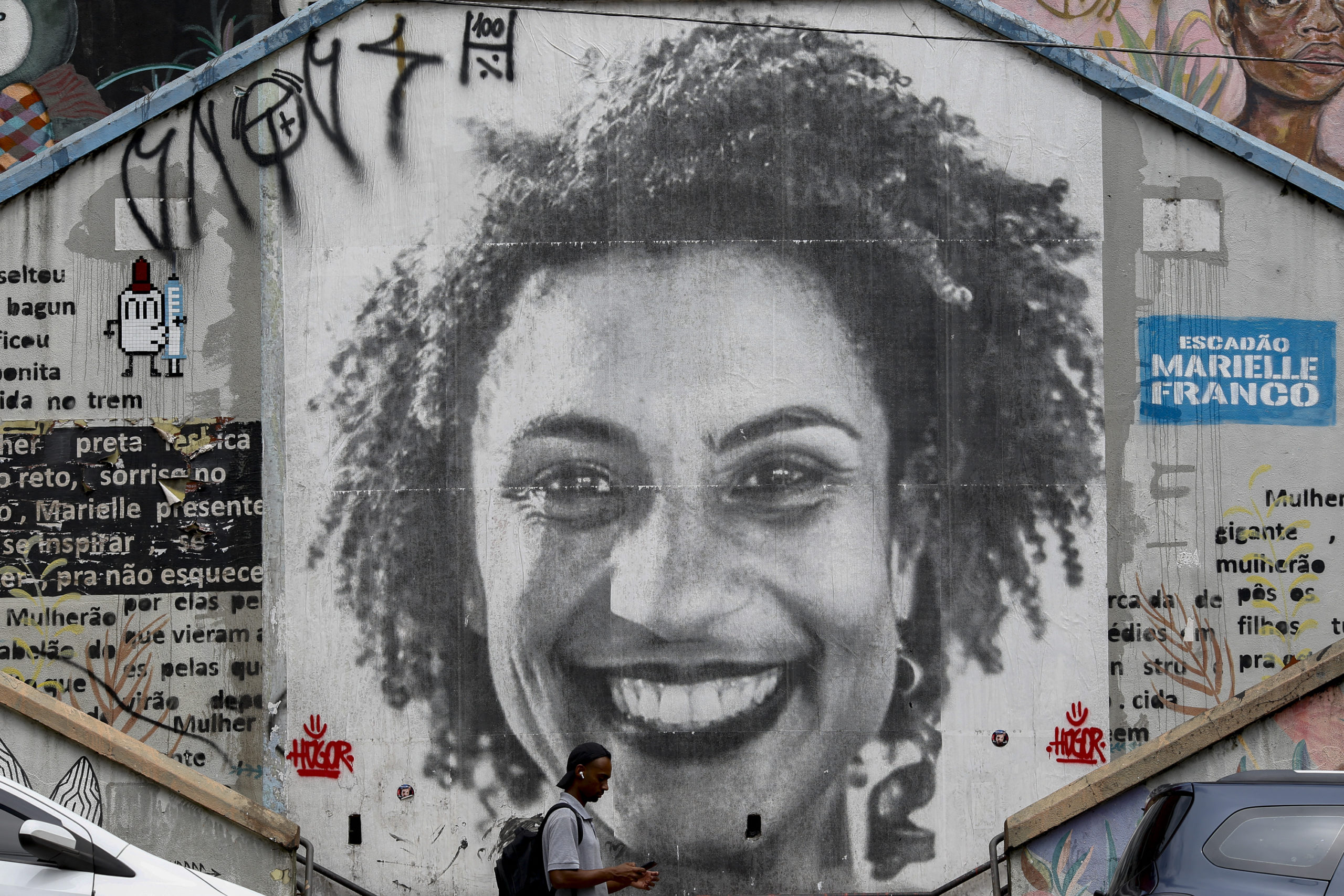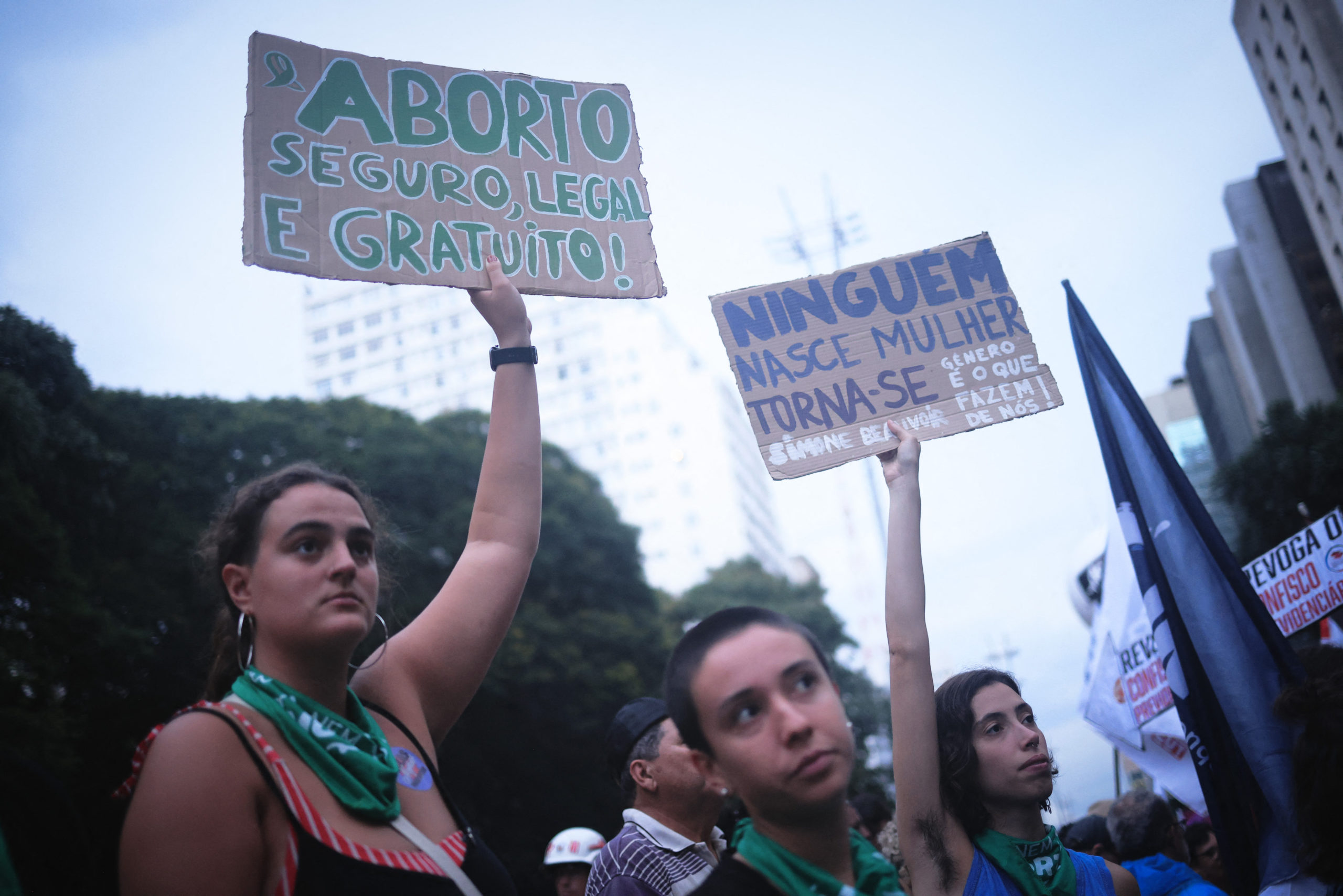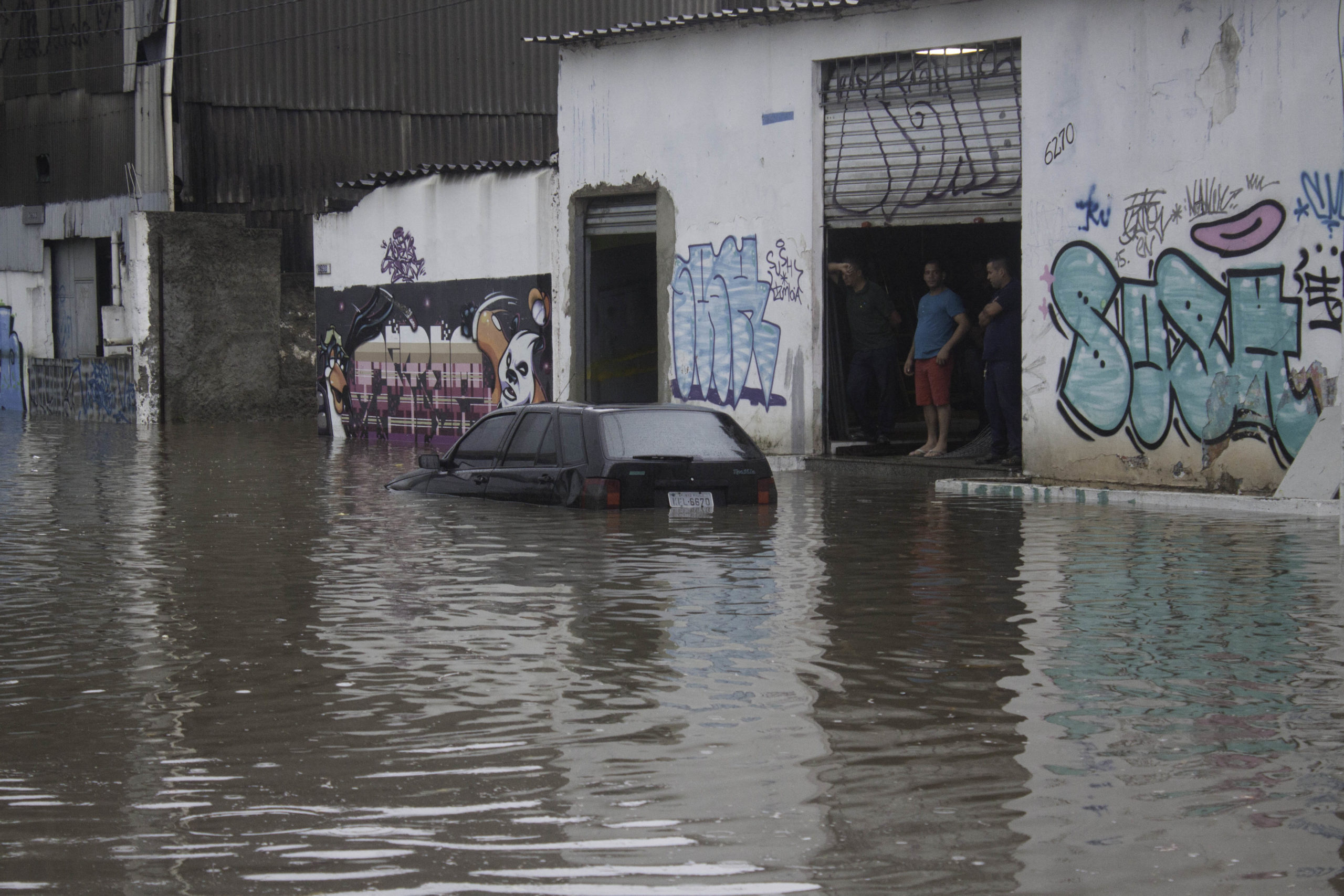Five explanatory points on the principal threats to the indigenous people, at this time
Throughout Brazil, indigenous leaders are mobilizing to defend life in the pandemic and against an agenda that is attempting to deny their land rights
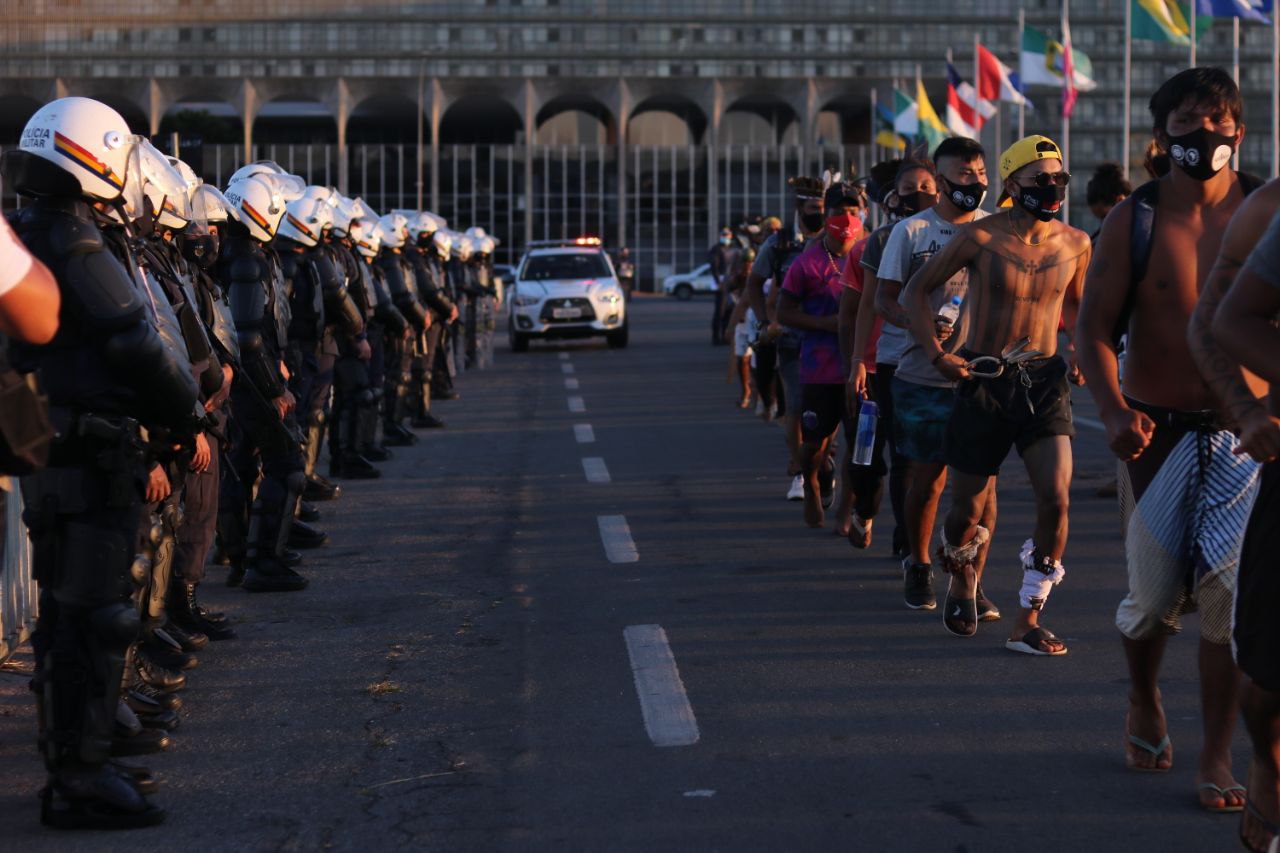 Indígenas participam de manifestação em Brasília (DF) em junho de 2021 Foto: Scott Hill/Mídia Índia
Indígenas participam de manifestação em Brasília (DF) em junho de 2021 Foto: Scott Hill/Mídia Índia
Since the beginning of the pandemic indigenous people have been organising to protect themselves not only from Covid-19 but also from raiders who are illegally exploiting their land in illegal economic activities, like mining, and who are spreading the virus in their territories.
In order to contain both threats and intimidation by raiders and deaths caused by the virus, indigenous organisations are appealing to the Supreme Federal Court (STF). They are also mobilising against the agenda to remove indigenous rights that is gaining ground in the National Congress.
“We are fighting with our prayers and songs. Our shields are our maracas and our ancestralism.” APIB said in a letter. APIB (Articulation of the Indigenous People of Brazil) is the organisation responsible for the Free Land Camp that gathered over 850 leaders in Brasília (DF) in June. The demonstrations in the federal capital also sparked a number of protests in villages and on highways around the country.
Five points on the principal threats to indigenous people at this time:
1. The “time benchmark” proposal in the STF
The proposal of a “time benchmark”, which is defended by the agribusiness community, states that the right to land can only be conceded to indigenous people who can prove that they were occupying or reclaiming their land on 5 October 1988, the date of the proclamation of the Federal Constitution. The proposal, however, does not take into consideration forced removals suffered by these people in the course of time or the indigenous fight in consolidating the rights that are included in the constitutional text.
The discussion reached the STF via Extraordinary Appeal 1.017.365, a request for repossession moved by the IMA (Environmental Institute) of Santa Catarina against Funai (National Indian Foundation) and the Xokleng indigenous people, regarding the piece of reclaimed land – TI (indigenous land) Ibirama-Laklanõ. The land in dispute has been identified in Funai studies and declared as part of the traditional territory of the Xokleng people by the Ministry of Justice and Public Security.
In 2019, the STF recognised general repercussion of the Extraordinary Appeal. In other words, the decision of this ruling will be applicable in other similar cases. This would mean that legislative measures, for example, will have to comply with the STF decision. Therefore, if the STF rejects the “time benchmark” proposal, it will be an important move towards ensuring the constitutional rights of the indigenous people. It is expected that the STF will take a decision on this appeal on 25 August 2021.
- Further reading: Time frame thesis: STF begins ruling on the future of the demarcation of indigenous land
- Time frame thesis and demarcation of indigenous land
2. “Time benchmark” bill in the National Congress
Bill 490/2007 which is in progress in the Chamber of Deputies, is based on the same proposal as the “time benchmark”. The text of this project, approved in June at the Commission of Constitution, Citizenship and Justice (CCJ), makes the demarcation of new areas impossible and opens the way for revoking territories that have already been demarcated, according to a legal procedure in use in Brazil.
This is because the power to conduct a new demarcation process would be transferred from executive to legislative authorities. So, the entire process that is currently carried out by Funai, guided by scientific, technical and legal criteria would be subject to the approval of the National Congress, where indigenous rights could be violated in order to meet other types of interest. In practice, the bill could open the Indigenous Territories to unsustainable ventures, like mining, farming and logging.
- Further reading: In a letter to Lira, organisations state that bill 490 makes demarcation of Indigenous Territories impossible
- Conectas, APIB, COIAB, ISA and the Arns Commission have denounced this bill to the Inter-American Commission on Human Rights and UN special rapporteurs
3. ADPF-709 in the STF: raiders and Covid-19 in indigenous communities
The presence of raiders, particularly miners, in indigenous communities during the Covid-19 pandemic, led APIB and six political parties to present ADPF (claim of non-compliance with a fundamental precept) 709 to the STF, denouncing the omission and failures of federal government and demanding the elaboration of an emergency plan to control the pandemic on indigenous land.
According to research carried out by ISA (Socio-Environmental Institute) there are real risks of contamination associated with these raids. In addition, there are three examples in the survey of seven indigenous territories that, together, suffered 85% of total deforestation recorded in the country, in 2019: Yanomami (Roraima/Amapá), Karipuna (Rondônia), Trincheira Bacajá (Pará), Kayapó (Pará), Munduruku (Pará), Araribóia (Maranhão) and Uru-Eu-Wau-Wau (Rondônia).
In a preliminary decision that partially attended the organisations´ request, Minister Luís Roberto Barroso, rapporteur of ADPF 709, obliged the federal government to present a series of measures to tackle the situation. Although positive, the decision left out a central element for the protection of indigenous people – expelling the raiders. The preliminary decision awaits final analysis by the STF plenary.
- Further reading: ADPF-709: plan of action for indigenous people
4. New Environmental Licencing Act in Congress
In May, the Chamber of Deputies approved the basic text of a bill that will ease environmental licencing, amongst others, allowing licencing through self-declaration. The new General Act of Environmental Licencing, (PL 3729/04) is currently in the Senate.
If it is approved, this bill could cause socio-environmental problems, human rights violations and damage the country´s image abroad. One of the problematic points that directly affects the indigenous people is the exclusion of analysis of the direct and indirect impacts and the adoption of measures that prevent possible damage to these communities, resulting from business ventures. This means, indigenous land undergoing the demarcation process is threatened by purely economic interests.
5.The Tucuruí Line on Waimiri-Atroari territory
This text, approved in June by the National Congress, facilitates privatisation of Eletrobrás and has an unrelated amendment that allows for work to begin on the Tucuruí Line, an energy transmission network between Manaus and Boa Vista. This does not have an environmental licence from Ibama or Funai and has not undergone consultation with the indigenous people.
Of the 721 km of coverage predicted in the network´s construction project, 125 cross Waimiri-Atroari indigenous land (Amapá-Roraima), situated on the border between Roraima and Amazonas, where around 2.1 thousand people live in 56 villages, according to ISA (Socio-Environmental Institute) data. The amendment overrides regulatory bodies and the indigenous people themselves and could cause damage to the people who live in the area and the environment.
